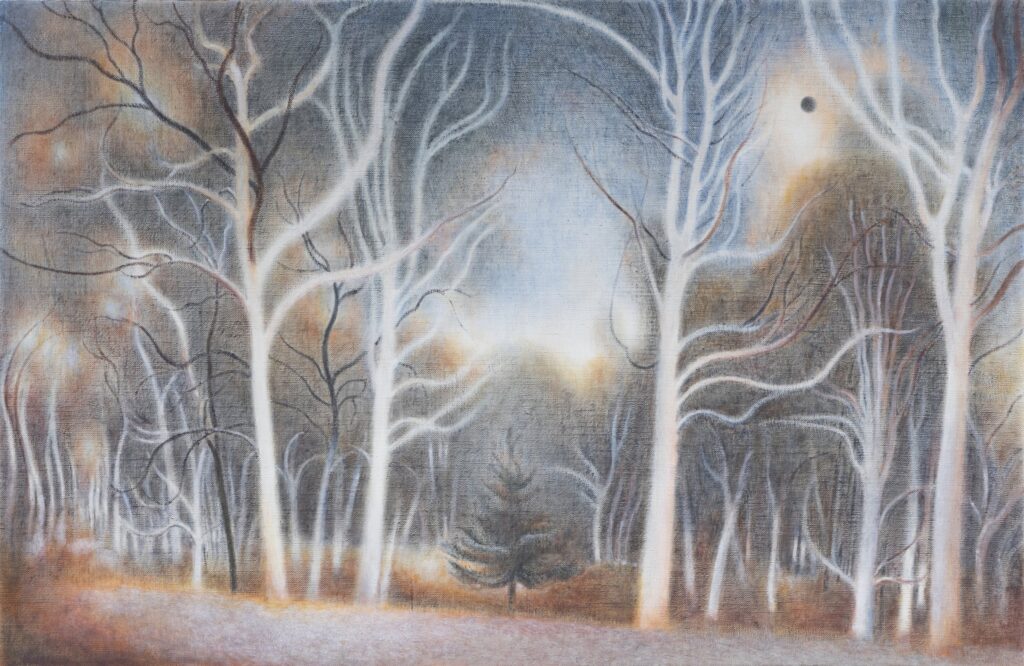A meaning made of trees

eclipse, oil on linen, 12″ x 18″
One of the first shows I visited when I was in New York City last week was a meaning made of trees, a collection of new work form Ron Milewicz. It’s outstanding. Milewicz continues to explore the pictorial possibilities of his new location in the Hudson Valley. I had an illuminating conversation with him about the work.
1. The little catalog available at the show, first of all, how was it done? I’ve tried that for solo shows in the past and have not been happy with the results, but your images were accurate and well printed. Who did these for you? Second, the catalog was from your previous show? If so, there’s a real consistency in quality and approach between those paintings and the ones on view now. You have found a groove and are working it, and you have clearly defined personal “rules” you follow in these Arcadian views. Did this style come to you all at once, full blown, or in stages?
The catalogue is from my Axis Mundi show in 2020. It was printed by an online company called Uprinting. I had the paintings photographed professionally. I designed the catalog myself on my Mac using Pages, and then a graphic designer familiar with Uprinting design programs made the layout that was sent to the printer.
That was two shows ago—I had another show since at Pamela Salisbury Gallery in Hudson, New York, in 2021.
I do not have “rules” but I do have a consistent approach to the landscapes that has developed over the past several years. For a period of about two years, I was only making on site graphite drawings. These tonal works are very much a direct response to the experience of the landscape I am working from—its atmosphere, light, spaces, and forms as well as its stillness and calm. The drawings were a very intuitive reaction to the environment, and they came relatively quickly. I then started to make oil paintings in the studio from the drawings. It took a longer time to understand how the drawings might be reinterpreted as paintings, in terms of materials, touch, color and scale.
2. Your career is interesting: you’ve gone from excellent urban landscapes to these visionary woodland scenes, both periods just as well done, but with a completely different sense of purpose, at least for the viewer. The urban landscapes fit within a much broader practice for contemporary artists; many more people are working in that vein these days. What you are doing with the trees reminds me of Burchfield and Nick Blosser, a Tennessee artist who has almost disappeared from view on the Web. Do you see these as two distinct phases or is there a continuity between the city and the country work for you?
They are two phases as they are derived from distinct locales and from the very different circumstances of my life outside of the studio, which inevitably changed my priorities in the studio. There is continuity in the sense that I am painting the world around me in both instances, although the conditions of those worlds are very different from each other. There’s also consistency in my concern for light, stillness and formal rigor.
3. I think of Burchfield in particular: the disjunction between his dark, almost monochrome American Scene pictures and the nearly psychedelic visions of his last period where he seemed to be attempting to convey the totality of nature in each painting. The divide between those two periods was radical, more radical than the shift in your work, but there’s no way for me to see how you get from the urban landscapes to the woodland visions, step by step. The move to Hudson Valley obviously triggered something, but the question is: what internally changed in how you see and paint as a result of this move? Did you grow up immersed in nature and then left it behind for years working in New York? MORE